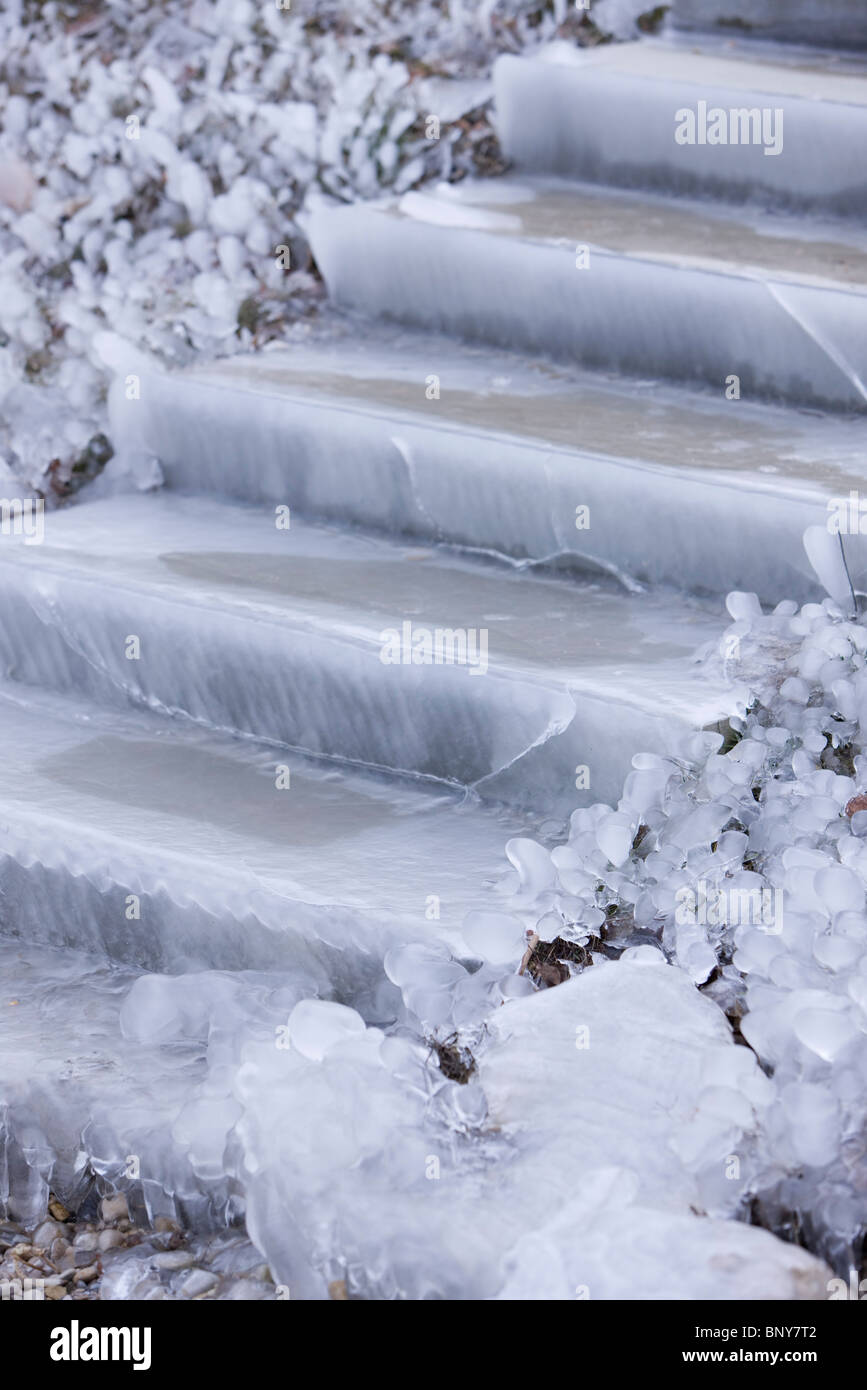Introduction
The chilly grip of winter can transform your once- inviting steps into a treacherous ice rink. Slippery wooden surfaces pose a significant hazard, putting your safety and that of your loved ones at risk. Fear not, as this comprehensive guide will unveil foolproof methods to keep your wooden steps ice-free, ensuring a safe and secure path throughout the winter season.

Image: www.alamy.com
Understanding Ice Formation on Wooden Steps
Ice formation on wooden steps primarily occurs due to moisture accumulation. When water seeps into wood fibers and freezes, it expands, causing the wood to warp and become slick. To combat this, we must prevent moisture from penetrating the wood.
Step-by-Step Guide to Ice-Free Wooden Steps
-
Seal the Wood: Apply a clear, penetrating wood sealant to prevent water absorption. Sealants create a protective barrier that blocks moisture from entering the wood, minimizing the risk of ice formation.
-
Install Drip Edge: Install a drip edge along the edge of the steps to redirect rainwater and snowmelt away from the surface. This simple addition channels water down instead of allowing it to pool and freeze.
-
Use Ice-Melting Products: Scatter ice-melting products such as salt, calcium chloride, or magnesium chloride on the steps before and during wintery conditions. These products lower the freezing point of water, preventing ice from forming.
-
Apply Sand or Gravel: Sprinkle a thin layer of sand or gravel on the steps for added traction. These materials provide a rough surface that helps prevent slips and falls. However, avoid using salt while the sand or gravel is present as it can clump and render the surface ineffective.
-
Regular Cleaning: Remove snow and ice from the steps promptly using a broom or snow shovel. Prevent ice buildup by clearing away any accumulation before it becomes compacted and dangerous.
-
Consider Heat Sources: In severe winter conditions, install heated mats or radiant heat under the steps. These localized heat sources prevent ice formation altogether, ensuring a safe and hazard-free passage.
Expert Insights for Effective Ice Removal
According to Dr. Johnathan Frost, a renowned expert in winter safety, “Regular maintenance and proactive measures are crucial for keeping wooden steps ice-free. Applying sealants, redirecting water, and promptly clearing snow can significantly reduce the risk of icy surfaces.”
Dale Winters, a veteran home inspector, emphasizes the importance of preventive measures: “Inspect your steps for any cracks or damage that may allow moisture to penetrate. Resolving structural issues promptly minimizes ice formation potential.”
Conclusion
By adhering to the methods outlined above, you can effectively keep your wooden steps ice-free, ensuring the safety of your home during the winter season. Remember, it’s all about preventing moisture penetration, removing ice promptly, and enhancing traction. Embracing these steps will guarantee a secure and worry-free experience, even in the iciest of conditions.

Image: www.pinterest.com
How To Keep Wooden Steps Ice Free